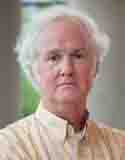Research, Research, and More Research...
Kamran Khodakhah Ph.D.
Department Chair, Dominick P. Purpura Department of Neuroscience
Behavioral/Cellular Molecular/Clinical

Cerebellar physiology and function; Motor coordination and movement disorders; Cerebellar contribution to non-motor functions, Autism, schizophrenia, addiction and migraine; Neuronal Excitability and Synaptic transmission
Anita E. Autry, Ph.D.
Assistant Professor, Neuroscience
(neuroscience category)

Renata Batista-Brito, Ph.D
Assistant Professor, Neuroscience
Assistant Professor, Genetics
(neuroscience category)

Michael V. L. Bennett, D.Phil.
Distinguished Professor, Dominick P. Purpura Department of Neuroscience Sylvia and Robert S. Olnick Chair in Neuroscience
(neuroscience category)

Pablo E. Castillo, M.D., Ph.D.
Professor, Dominick P. Purpura Department of Neuroscience Harold and Muriel Block Chair in Neuroscience
(neuroscience category)

Excitatory and inhibitory synaptic transmission and plasticity under physiological and brain disease conditions, such as Alzheimer’s disease, epilepsy, autism, schizophrenia and drug abuse
Kostantin Dobrenis, Ph.D.
Assistant Professor, Dominick P. Purpura Department of Neuroscience
(neuroscience category)

Anna Francesconi, Ph.D.
Associate Professor, Dominick P. Purpura Department of Neuroscience
(neuroscience category)

Functions of metabotropic glutamatergic signaling in neuronal plasticity and homeostasis; impact of mGluR-interacting proteins and lipids on synaptic functions in animal models of Fragile X syndrome, intellectual disability and schizophrenia
Tiago Gonçalves, Ph.D.
Assistant Professor, Dominick P. Purpura Department of Neuroscience
(neuroscience category)

David H. Hall, Ph.D.
Professor, Dominick P. Purpura Department of Neuroscience
(neuroscience category)

Connectomics, ciliogenesis, genetic control of axon guidance, axonal transport, and neuronal cell fate in Caenorhabditis elegans, tubulogenesis in nematode epithelia, anatomy of aging in nematode tissues, new methods in EM
Jean M. Hébert, Ph.D.
Professor, Dominick P. Purpura Department of Neuroscience Professor, Department of Genetics
(neuroscience category)

Devising methods of cell replacement for the adult neocortex when its cells are lost due to damage or age-related degeneration.
Bryen A. Jordan, Ph.D.
Associate Professor, Dominick P. Purpura Department of Neuroscience
Associate Professor, Psychiatry and Behavioral Sciences
(neuroscience category)

Synaptic plasticity; RNA transport and local translation; synapse-to-nucleus signaling; Proteomic analysis of the dynamics of synaptic junctions; molecular mechanisms underlying neurodevelopmental disorders.
Adam Kohn, Ph.D.
Professor, Dominick P. Purpura Department of Neuroscience Professor, Department of Ophthalmology and Visual Sciences Professor, Departmen of Systems and Computational Biology Isidor Tachna Professor in Ophthalmology
(neuroscience category)

My lab studies visual processing, with a focus on issues of rapid cortical plasticity, population coding, and inter-areal communication. We use neurophysiological, computational and behavioral methods in our work.
Peri Kurshan, Ph.D.
Assistant Professor, Dominick P. Purpura Department of Neuroscience
(neuroscience category)

Synaptic development, synaptogenesis, synapse function, molecular neuroscience, cellular neurobiology, synaptic cell biology, C. elegans, genetics, development
Saleem M. Nicola, Ph.D.
Associate Professor, Dominick P. Purpura Department of Neuroscience
Associate Professor, Department of Psychiatry and Behavioral Sciences
(neuroscience category)

José L. Peña, M.D., Ph.D.
Professor, Dominick P. Purpura Department of Neuroscience
(neuroscience category)

We investigate how the brain selects relevant features of the environment to encode information efficiently. We study hearing in birds, using their specialized behaviors to elucidate fundamental principles of brain function.
Alberto E. Pereda, M.D., Ph.D.
Professor, Dominick P. Purpura Department of Neuroscience
(neuroscience category)

Synaptic transmission; properties and plasticity of gap junction-mediated electrical synapses; functional interactions between chemical and electrical synapses.
Jelena
(neuroscience category)

Rachel A. Ross, M.D., Ph.D.
Assistant Professor, Dominick P. Purpura Department of Neuroscience
Co-primary, Assistant Professor, Department of Psychiatry and Behavioral Sciences
(neuroscience category)

Stephanie Rudolph, Ph.D.
Assistant Professor, Dominick P. Purpura Department of Neuroscience
Co-primary, Assistant Professor, Department of Psychiatry and Behavioral Sciences
(neuroscience category)

Our research focuses on how neuromodulation affects synaptic plasticity, inhibition, and multisensory integration to shape behavior in health and disease.
Lucas L. Sjulson, M.D., Ph.D.
Assistant Professor, Psychiatry
Assistant Professor, Dominick P. Purpura Department of Neuroscience
(neuroscience category)

We study decision-making and drug addiction in rodent models using a broad approach that incorporates cutting edge methods from both systems and molecular neuroscience.
Frank Soldner, M.D.
Assistant Professor, Dominick P. Purpura Department of Neuroscience
(neuroscience category)

David C. Spray, Ph.D.
Professor, Dominick P. Purpura
Department of Neuroscience
Professor, Department of Medicine (Cardiology)
(neuroscience category)

Elyse S. Sussman, Ph.D.
Professor, Dominick P. Purpura Department of Neuroscience
Professor, Otorhinolaryngology—Head and Neck Surgery
(neuroscience category)

Neurobiology of auditory perception, attention, and memory; human electrophysiology; neural adaptation; multisensory interactions in perception; changes in auditory cognition across the lifespan; neurodevelopmental disorders
Vytautas Verselis, Ph.D.
Professor, Dominick P. Purpura Department of Neuroscience
(neuroscience category)

Sensorineural syndromic deafness; biophysical characterization of mutant connexin 26 channels; generation of mouse models that capitalize on aberrant channel functions; development of pharmacological agents for treatment
Steven U. Walkley, D.V.M., Ph.D.
Professor, Dominick P. Purpura Department of Neuroscience
Professor, Department of Pathology
Professor, The Saul R. Korey Department of Neurology
Director, Rose F. Kennedy Intellectual and Developmental Disabilities Research Center, Dominick P. Purpura Department of Neuroscience
(neuroscience category)

R. Suzanne Zukin, Ph.D.
Professor, Dominick P. Purpura Department of Neuroscience
F.M. Kirby Chair of Neural Repair and Protection
Director, Neuropsychopharmacology Center
(neuroscience category)

Regulation of synaptic function and plasticity in response to external cues including neuronal insults, maternal deprivation, and stress, via epigenetic mechanisms. Altered signaling at the synapse in mouse models of autism.